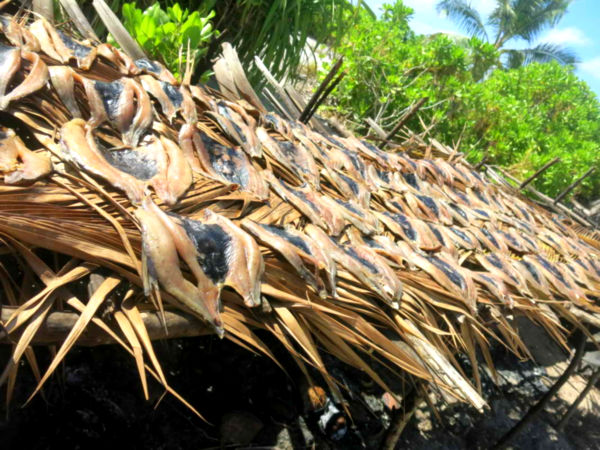Milkfish Processing Technology
The milkfish is the most important fish species being farmed in the Philippines. True to its name the milkfish provides not only reasonably priced source of nutritious protein to millions of people in the Indo-Pacific region but also livelihood to countless of families engaged in aquaculture.

The technology to process milkfish into various forms is well established with most of them adaptable to home-scale level of operation with minimal start up cost and equipment needs.
Drying is regarded as the oldest way of preserving fish. It is a simple process not requiring complicated equipment
(Guevara et al., 1978).
Sun-Dried Milkfish
Ingredients
Fresh fish
Coarse salt
Tools and utensils
Drying trays
Enamel basins
Knife
Procedure
1. Wash the fresh fish, split into butterfly fillet, remove the entrails, gills and viscera. Wash again thoroughly in fresh water.
2. Soak the fish in brine (1:3 salt to water ratio or 64.2º salometer brine) for 30, 45, 60 minutes for small (246.0± 4 g), medium (347.0± 3 g) and large (495.0± 5 g) milkfish, respectively.
3. Arrange fish in drying trays. Lay fish skin-side down, and turn 3 to 4 times on the first day of drying to have the drying even and also to prevent a sun burned and deformed product.
4. Dry for 2 days or 10 to 14 continuous hours, 3 days or 16 to 20 continuous hours, and 4 to 5 days or 28 to 32 continuous hours for small, medium and large milkfish, respectively.
5. Dried milkfish maybe stored at room temperature or at refrigerated temperature (5 to 7ºC). Refrigeration temperature is recommended for longer storage. When stored at room temperature, it is recommended that the plastic packaging material used be perforated.
Source: (Wilfredo G. Yap, Antonio C. Villaluz, Ma. Gracia G. Soriano, and Mary Nia Santos) Milkfish Production and Processing Technologies in the Philippines
